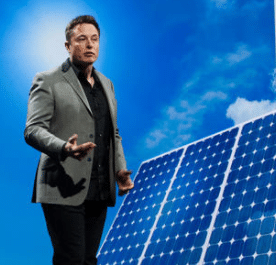Three Examples of Solar Marketing Done Right

It’s easy to point out where solar marketing gets it wrong: used-car sales tactics, selling price over value, or simply failing to follow up. But what about the companies that are marketing solar and renewable energy effectively — making a powerful emotional connection with customers, prospects, and even those who just happen to encounter these companies through ads, crews working in the neighborhood, or through the influence of online customer reviews and word of mouth?
One example of solar marketing done right is Sullivan Solar Power in San Diego, California.
Sullivan Solar Power was founded in 2004 by San Diego native Daniel Sullivan, who was determined not to be your ordinary solar company. Daniel has been on a mission to change the way the world generates electricity, and he shares that enthusiasm with everyone he meets.
He has also been relentless in stressing four key factors to success as a solar installation company:
- Hire the best-trained people
- Install the best products
- Use rigorous quality assurance and quality control processes
- Produce high-performance solar energy systems
After a Sullivan system is installed, the company guarantees its customers the amount of energy their solar will produce for 10 years. If the system underproduces, Sullivan will make up the difference. In cash.
These are the kinds of business practices we need more of in solar. While they don’t guarantee great solar marketing, they do make a marketer’s job much easier.
Because the brand is authentic – and it starts right at the top.
Another example of authentic branding is SolarEdge. The DC optimizer and inverter company has singled itself out over the last several years by doing something many on the tech side of solar find daunting: humanizing a technology message.
Solaredge has built its reputation by developing residential and commercial solutions that optimize power output. But the company developed something of a cult following in the solar industry with its early Lipsync videos (my favorite is still Shine On) — distinct for the way they show company staffers don’t take themselves too seriously — but do believe in a solar-powered future.
It’s a disarming approach that makes it easy for customers to see beyond watts and cost savings to a company of human beings who care about the products they’re producing. In the meantime, SolarEdge has propelled itself to the top of what was a highly fragmented power electronics category to be one of the leading providers in the space, along with Enphase.
Finally there is Tesla, the renewable energy powerhouse that is fast becoming much more than a company. Tesla is leading the clean energy industry into new brand territory. While insiders are well aware of Tesla’s expertise in the EV and emerging battery space, to the average man or woman on the street who is aware of Tesla, the brand represents aspiration and blue-sky possibilities.
To many, just reading or hearing the name Tesla conveys a sense of wonder and optimism.

Elon Musk, CEO of Tesla, tips the brand convergence with Solar City. (Photo credit: Jerome Adamstein / Los Angeles Times)
Tesla’s charismatic CEO, Elon Musk, is seen as a disruptor, an innovator, and the chief influence officer of a company that is changing the way the public perceives an automobile or energy company.
While we can’t really count Tesla yet as a solar marketing success, if the company’s recently approved purchase of Solar City is successful, the entire solar industry stands to benefit from some of the brand magic associated with Tesla.
Musk has already succeeded in transforming the way people think about everything from consumer expectations of luxury to responsible energy consumption. As a result, Tesla has become one of the most followed, liked, and tweeted brands on the Internet.
So as you look ahead to what could be a challenging year for renewables, don’t be afraid to broaden the way you think about solar branding. But whatever you do, make it real. Your customers and potential customers can see the difference.
Stay in touch
Get information just like this in your inbox.
Unsubscribe at any time
About the Author

Nancy Edwards
Founder/Managing Partner
Nancy Edwards is founder and managing partner of Clean Power Marketing.
Ready to Power Up Your Marketing?
At CPM, we work with the game changers, the innovators, the leaders tackling the planet’s most urgent environmental challenges. If you’re one of them, we’d love to collaborate with you.
